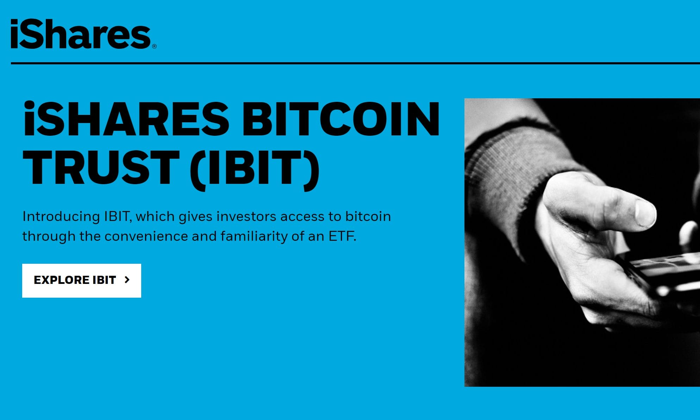The Securities Clarity Act is a pivotal piece of legislation reintroduced by Congressman Emmer on March 26, aiming to provide much-needed clarity in the realm of digital asset regulation. By establishing a clear distinction between investment contract assets and the underlying digital assets, this act seeks to alleviate the regulatory confusion that has impeded innovation in blockchain technology. With the complexities of federal securities law often creating barriers for entrepreneurs, the Securities Clarity Act promises to streamline compliance and enhance investor protections. Through bipartisan support, this legislation not only addresses urgent questions about the classification of digital assets but also emphasizes the necessity for regulatory certainty in a rapidly changing financial landscape. As lawmakers prioritize this issue, the act stands as a significant step toward fostering an environment conducive to growth and technological advancement in the digital asset space.
The reintroduction of this legislation by Congressman Emmer is crucial in the ongoing conversation about digital asset governance and regulatory frameworks. Known colloquially as the Securities Clarity legislation, this initiative is designed to better define how emerging technologies, particularly in digital currency and blockchain, align with existing financial regulations. This law seeks to create a framework that differentiates investment contracts from their corresponding assets, which can enhance the regulatory landscape for innovators and investors alike. By clarifying the legal boundaries of these assets, the act aims to promote a thriving ecosystem for blockchain advancements and secure investor confidence. As congressional support builds for this legislation, it signifies a broad recognition of the importance of defining digital asset regulation to stay competitive in the global market.
The Importance of the Securities Clarity Act for Digital Asset Regulation
The Securities Clarity Act, reintroduced by Congressman Emmer and Rep. Darren Soto, aims to provide much-needed clarity in the rapidly evolving landscape of digital asset regulation. By establishing a clear distinction between ‘investment contract assets’ and the underlying digital assets, this legislation seeks to alleviate confusion surrounding how federal securities law applies to blockchain technology. The lack of precise definitions has created a regulatory gray area that hinders innovation and investment in the digital asset space. As financial markets evolve alongside technological advancements, establishing a legal framework that embraces these assets is essential to protect both investors and innovators.
Moreover, the Securities Clarity Act highlights the critical need for a consistent regulatory approach that fosters growth while ensuring consumer protections are prioritized. This is especially relevant in a market where digital assets can often occupy a nebulous space between securities and non-securities. With this clarity, businesses can confidently navigate regulatory requirements, which encourages investment and may lead to advancements in technology and infrastructure. The legislation, by delineating legal categories for different digital assets, not only enhances regulatory certainty but also positions the United States to maintain its leadership in the burgeoning global market for blockchain and digital currencies.
Separating Tokens from Securities: The Future of Blockchain Innovation
One of the key components of the Securities Clarity Act is its introduction of the term ‘investment contract asset.’ This essential definition provides a basis for potentially separating tokens from the securities classification that has traditionally enveloped them. By allowing the underlying asset to transition away from its initial offering conditions, the legislation paves the way for innovative business models that can utilize digital assets in more diverse ways. This separation acknowledges that while an asset might begin as an investment contract, it can evolve to serve broader practical uses, emphasizing the dynamic nature of blockchain technology.
As a result, the potential for blockchain innovation is significantly enhanced, as this legislation could inspire a new wave of startups and established companies to explore the functionalities of their digital assets without the fear of immediate regulatory repercussions. Legislative support for clearer distinctions can encourage these entities to invest resources into developing cutting-edge technologies. Lawmakers have recognized that as global competitors introduce more refined regulatory frameworks, maintaining a competitive edge in blockchain innovation depends on a solid legal foundation. Thus, the Securities Clarity Act cannot be overlooked in the broader context of fostering a thriving digital economy.
Bipartisan Support and Legislative Momentum for Digital Asset Regulation
The bipartisan backing for the Securities Clarity Act is a significant indicator of the growing consensus in Congress surrounding the need to modernize digital asset regulation. With overwhelming support during its initial introduction in the Financial Innovation and Technology for the 21st Century (FIT21) Act, the revival of this bill marks a pivotal movement towards establishing defined jurisdiction between the SEC and CFTC. This clarity is essential not only for regulatory compliance but also for creating an environment that nurtures economic growth in the digital asset sector. As different political parties unite under the same goal, it demonstrates an understanding that properly structured regulations can serve as a catalyst for financial innovation.
Additionally, as the Securities Clarity Act gains traction, it reveals a shift in legislative perspectives towards the significance of digital asset markets. Lawmakers increasingly acknowledge that precise regulations can better align with the pace of technological advancements. By distinguishing digital assets within federal securities law, Congress can mitigate risks for investors while simultaneously encouraging firms to pursue innovations that could lead to increased productivity and economic benefits. This proactive approach underlines a commitment to not only protecting investors but also ensuring that the United States remains a competitive player in the global financial landscape.
Creating Predictable Rules: Impact on Entrepreneurs and Investors
One of the critical outcomes of the Securities Clarity Act will be the establishment of predictable regulatory rules that enable entrepreneurs to assess risks accurately and launch compliant digital asset products. As Congressman Emmer emphasized, clear definitions are vital for fostering an innovative environment. When regulations are ambiguous, startups often shy away from leveraging blockchain technologies, fearing legal repercussions. With the Securities Clarity Act, entrepreneurs can navigate the landscape with greater assurance, resulting in a more vibrant and competitive marketplace. The clarity this legislation provides empowers innovators to pursue their ventures with confidence.
Moreover, establishing predictable rules benefits investors by enhancing transparency and accountability within the digital asset market. Investors are much more likely to engage in an environment where they understand the regulatory framework and their rights as participants. The legislation promises to safeguard investors’ interests while also sparking investment in blockchain-related projects. As more individuals and institutions gain confidence in compliance, there will likely be an influx of capital directed towards digital assets, fostering overall economic growth. The Securities Clarity Act, therefore, represents a crucial step towards unlocking the full potential of blockchain innovation for the benefit of all stakeholders.
Addressing Regulatory Uncertainty in the Digital Asset Space
Regulatory uncertainty has been one of the most significant obstacles facing the digital asset market, often stifling growth and innovation. The Securities Clarity Act seeks to address this issue by clarifying the classification of digital assets under federal securities law. By defining ‘investment contract assets’ separately from their underlying tokens, the legislation aims to eliminate confusion that hinders entrepreneurs from confidently launching their products. This increased legal clarity is crucial for fostering an environment in which businesses can thrive, allowing for the exploration of the full potential of blockchain technology.
As more jurisdictions around the world develop coherent regulatory frameworks for digital assets, there is an increasing need for the U.S. to catch up. The Securities Clarity Act positions the country to remain a front-runner in digital asset innovation by reducing compliance burdens on companies and facilitating smoother operations within the financial markets. This legal framework not only protects investors but also ignites the entrepreneurial spirit necessary for technological advancement. By addressing regulatory concerns, this act represents a progressive step forward in aligning the legislation with the needs of an evolving digital economy.
Global Competitiveness: The Role of the Securities Clarity Act
To ensure that the United States continues to lead the way in digital asset innovation, it is imperative that regulatory clarity is established. The Securities Clarity Act plays a crucial role in this endeavor by outlining how federal securities laws apply to digital assets. As global competitors adopt more comprehensive regulatory frameworks, the U.S. risks falling behind without a defined strategy. This bill aims to provide a cohesive structure that balances innovation with necessary investor protections, which is essential for maintaining competitive advantages in the international market for blockchain technologies.
Furthermore, as venture capital firms and technology companies consider where to invest, regions with clear regulations are likely to attract significant investment. By reinforcing the legal landscape for digital assets, the Securities Clarity Act could position the United States as a preferred destination for blockchain innovation. This not only supports economic growth but results in heightened job creation and advancements in technology. The strategic importance of this approach cannot be overstated — by fostering a legislative environment that encourages innovation while safeguarding investors, the U.S. can solidify its standing as a leader in the global digital economy.
Consumer Protection in the Context of Digital Assets
Consumer protection is a paramount concern in any financial market, and the emergence of digital assets has brought this issue to the forefront. The Securities Clarity Act emphasizes the need for robust regulatory frameworks that safeguard investors participating in this innovative space. By clarifying the classification of digital assets under federal securities laws, the legislation aims to enhance transparency, thereby building trust among consumers. This new clarity will help consumers understand their rights and obligations, fostering a safer environment for investment.
Moreover, as industry stakeholders work to adopt compliant practices, consumers will benefit from improved standards across the board. With clear definitions and guidelines, firms are more incentivized to operate transparently, which in turn enhances consumer confidence in digital assets. The Securities Clarity Act represents a foundational step both in promoting innovation and ensuring that consumer protections are woven into the fabric of the digital economy. This balance is vital for encouraging participation while minimizing risks associated with investment in volatile digital markets.
Future Legislative Steps: The Path Ahead for Digital Asset Regulation
The reintroduction of the Securities Clarity Act is only the beginning of what could be a comprehensive legislative journey towards modernizing digital asset regulation. As this bill gains momentum in Congress, it is likely to prompt further discussions and proposals aimed at refining the overall regulatory framework. Key stakeholders, including lawmakers, industry experts, and consumer advocates, will need to collaborate to address potential gaps in the existing system. The aim will be to create a cohesive regulatory environment that promotes innovation while ensuring proper oversight and investor protection.
As the digital asset landscape continues to evolve, ongoing legislative efforts will focus on refining definitions, expanding regulatory clarity, and adapting to technological advancements. The Securities Clarity Act sets a foundation but will likely inspire additional measures that address new challenges and opportunities in the blockchain space. Engaging with industry leaders and experts will be crucial in shaping effective regulations that anticipate changes in market dynamics, ensuring that the United States maintains its competitive edge in digital asset innovation while aligning with international regulatory standards.
Frequently Asked Questions
What is the Securities Clarity Act and its purpose in digital asset regulation?
The Securities Clarity Act is legislation reintroduced by Congressman Emmer to clarify the classification of digital assets under federal securities law. Its primary purpose is to establish a clear distinction between an ‘investment contract’ and the underlying asset, promoting innovation while ensuring investor protection in the rapidly evolving digital asset landscape.
How does the Securities Clarity Act define ‘investment contract asset’?
Under the Securities Clarity Act, the term ‘investment contract asset’ refers to the underlying digital asset distinct from the investment contract itself. This new classification aims to facilitate a regulatory approach that adapts as the asset matures and transitions towards broader utility or decentralization.
Why is the clarification of digital asset regulation important according to Congressman Emmer?
Congressman Emmer emphasizes that without clear definitions regarding digital asset regulation, entrepreneurs struggle to assess risks and comply with federal securities laws. The Securities Clarity Act aims to provide the clarity necessary for launching compliant products, allowing investors to engage effectively with emerging technologies.
What legislative momentum does the Securities Clarity Act represent regarding blockchain innovation?
The reintroduction of the Securities Clarity Act reflects a growing congressional momentum towards modernizing digital asset regulation, especially in response to global competitors. By aiming for clearer regulation between the SEC and CFTC, the bill seeks to establish the U.S. as a leader in blockchain innovation while also protecting investors.
How does the Securities Clarity Act support both economic growth and investor protection?
The Securities Clarity Act seeks to create predictable rules for digital asset regulation that foster economic growth and innovation. As highlighted by Rep. Soto, this legislation is designed to protect investors by providing them with the legal certainty needed to navigate the digital asset landscape responsibly.
What was the previous legislative context for the Securities Clarity Act?
Before its recent reintroduction, the Securities Clarity Act was included in the Financial Innovation and Technology for the 21st Century (FIT21) Act, which garnered bipartisan support and passed the House in May 2024. This context underscores the ongoing commitment of lawmakers to refine the regulatory framework for digital assets.
How will the Securities Clarity Act impact the relationship between the SEC and CFTC?
The Securities Clarity Act aims to establish clearer jurisdiction between the Securities and Exchange Commission (SEC) and the Commodity Futures Trading Commission (CFTC), which have historically disagreed over the regulatory oversight of digital assets. By clarifying classifications, the Act seeks to streamline governance in the digital asset space.
What are the benefits of the Securities Clarity Act for emerging technologies?
The Securities Clarity Act is designed to nurture emerging technologies by providing clear definitions and legislation surrounding digital asset regulation, thereby encouraging innovation. By reducing regulatory uncertainty, it allows entrepreneurs to develop compliant products that can thrive in the U.S. market without undermining consumer protections.
| Key Point | Details |
|---|---|
| Introduction of the Bill | The Securities Clarity Act was reintroduced by Congressman Emmer and Rep. Soto on March 26, aiming to clarify digital asset classification. |
| Definition of Investment Contract Asset | The bill establishes the term ‘investment contract asset’ to differentiate the asset from its associated contract for improved regulatory treatment. |
| Entrepreneurs’ Challenges | Unclear definitions hinder entrepreneurs from assessing risks and launching compliant products, impacting consumer participation in technology. |
| Legislative Background | The act was part of the FIT21 Act and received bipartisan support in the House, demonstrating momentum for clearer digital asset regulation. |
| Protection for Investors | The Securities Clarity Act aims to protect investors while fostering innovation within the digital asset space. |
| Regulatory Directorate | The bill seeks to clarify jurisdiction issues between the SEC and the CFTC regarding the oversight of digital assets. |
| Bipartisan Support | Lawmakers from both parties recognize the need for clear regulations to keep the U.S. competitive in adopting blockchain innovations. |
Summary
The Securities Clarity Act is a crucial legislative effort aimed at clarifying the status of digital assets under U.S. federal securities law. By defining terms like ‘investment contract asset,’ it addresses regulatory ambiguities that have impeded innovation in the blockchain sector. This bipartisan initiative highlights the urgent need for lawmakers to modernize the framework surrounding digital asset regulation, fostering both investor protection and industrial growth. As global competitors refine their approaches, the passage of the Securities Clarity Act could position the U.S. as a leader in digital finance.
The Securities Clarity Act, recently reintroduced by Congressman Emmer and Rep. Darren Soto, is poised to reshape the landscape of digital asset regulation in the United States. This pivotal legislation seeks to delineate the often-blurred lines between digital assets and investment contracts under federal securities law. By establishing a clear framework, the Act aims to foster blockchain innovation while offering much-needed legal clarity to entrepreneurs and investors alike. The emphasis on defining an “investment contract asset” distinguishes the digital asset from its contractual counterpart, facilitating a more adaptive regulatory approach. This move not only protects consumers but also enables businesses to navigate the evolving market with confidence.
The recently revived legislative proposal, known for its focus on harmonizing federal laws related to digital currencies and tokens, is a significant development in ongoing discussions about fintech and blockchain. This initiative reflects a broader push towards establishing consistent guidelines that govern the intersection of technology and investment. With increasing attention on how securities regulation applies to emerging technologies, the emphasis is on creating a robust framework that encourages innovation while safeguarding investor interests. As members of Congress unite to refine the legal definitions surrounding digital asset classification, the urgency to modernize regulations becomes evident. Such reforms are crucial in ensuring that the United States remains competitive in the rapidly advancing domain of digital finance.















